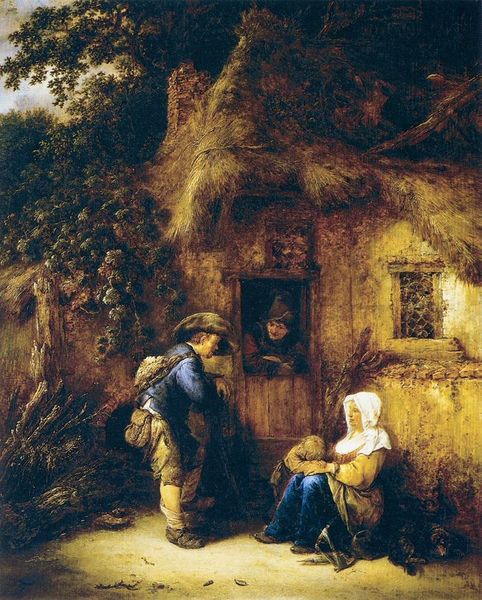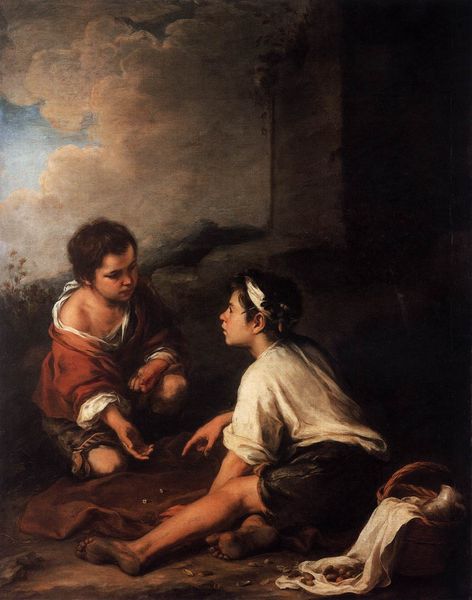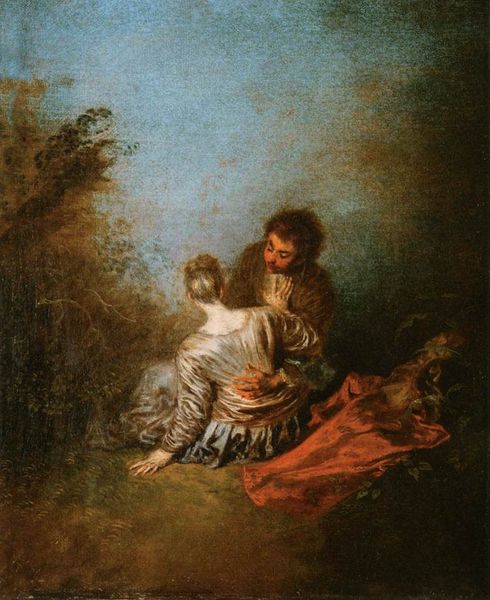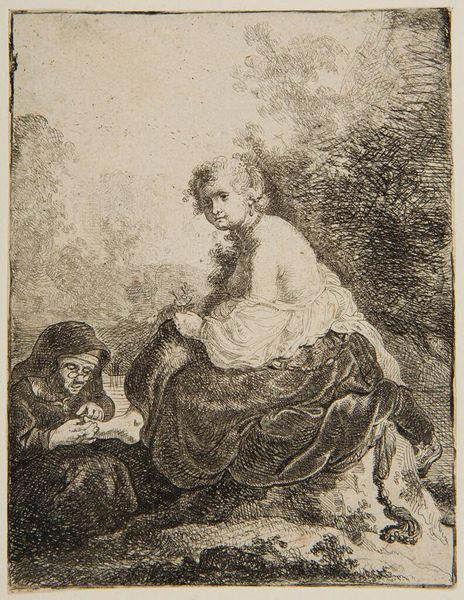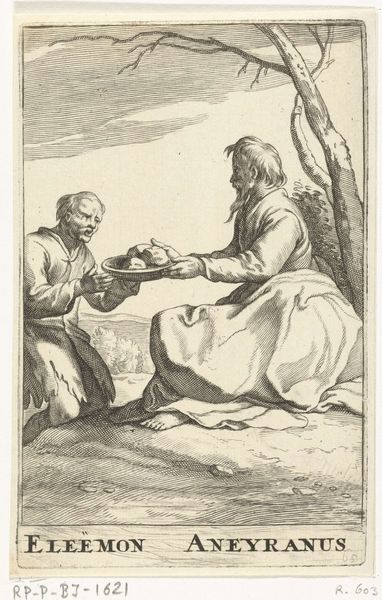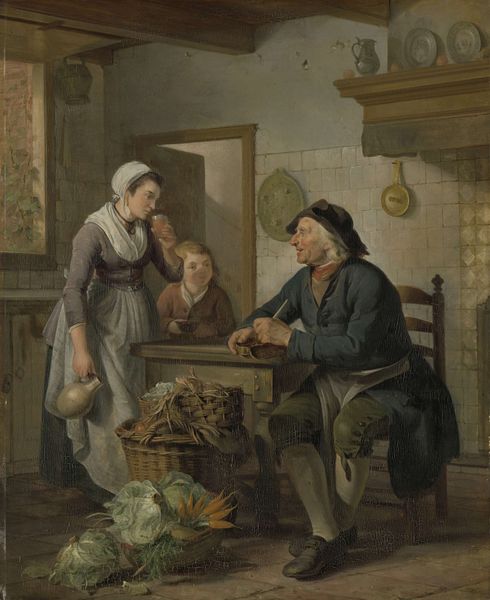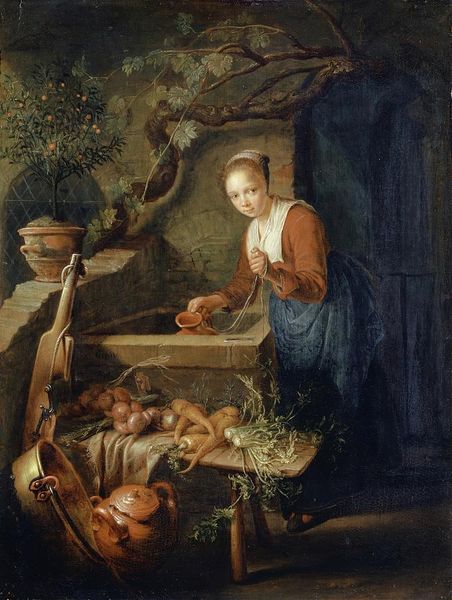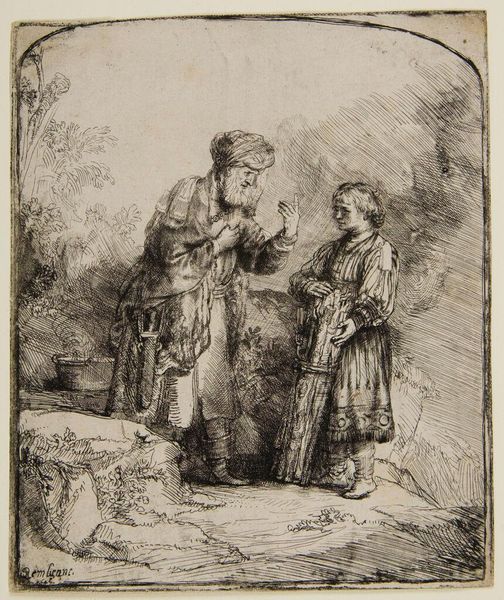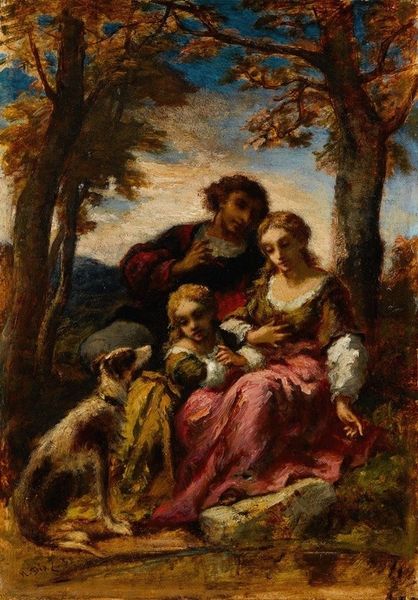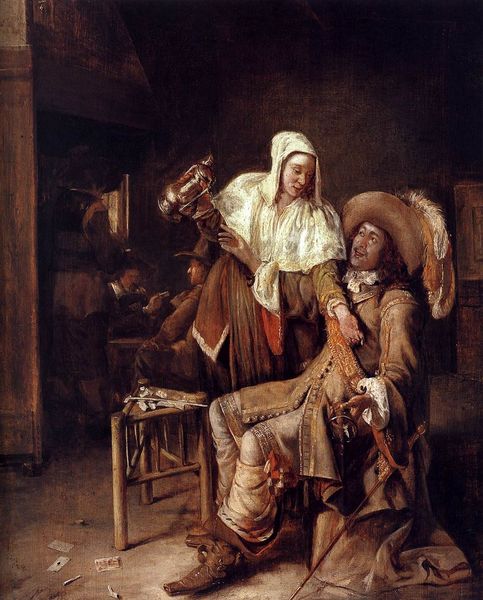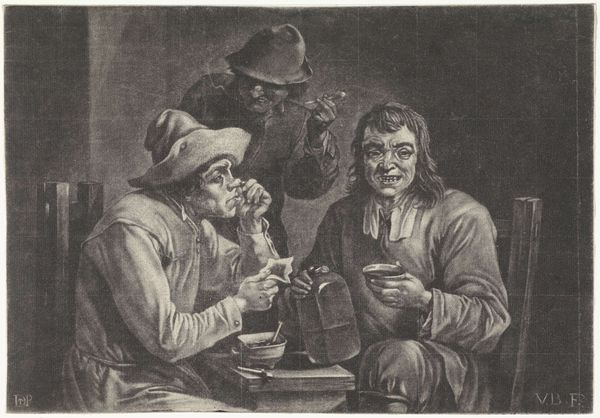
Peasant Woman and a Boy 1659
0:00
0:00
bartolomeestebanmurillo
Wallraf-Richartz Museum, Cologne, Germany
painting, oil-paint
#
portrait
#
baroque
#
dutch-golden-age
#
painting
#
oil-paint
#
dog
#
oil painting
#
child
#
group-portraits
#
genre-painting
#
realism
Copyright: Public domain
Curator: Before us hangs "Peasant Woman and a Boy," created in 1659 by Bartolomé Esteban Murillo. It's an oil painting, currently residing in the Wallraf-Richartz Museum in Cologne. Editor: My first impression? There's a warmth despite the evident poverty, and an odd mirroring—the way the dog and the woman both seem to fix their gaze intently on their respective sources of sustenance. It is Baroque art that tends towards realism; can it be? Curator: Absolutely. Murillo was painting during a time of immense social upheaval in Spain. His representations of marginalized communities challenged the idealizations often presented in Baroque art, thus influencing intersectional awareness. In a time where religion still conditioned class and identity, art tried to reframe these themes. Editor: Interesting. I'm drawn to the bowl she's holding. It represents not just nourishment, but also continuity, doesn't it? The simple act of eating, a ritual spanning generations, depicted with such intimate detail, the dog at the right. Is that not also an expression of timeless connection, but the connection, rather, is the mundane and familiar and everyday? Curator: Precisely. Murillo’s genius lies in how he humanizes his subjects. Notice the boy's outstretched hand—perhaps begging or explaining the food. It invites dialogue, engaging the viewer with the social reality of poverty. Also consider: who this would appeal to then. Editor: The clothing too. While simple, almost ragged, its folds and drapes give each person a distinct presence. Curator: The dog has always been a loaded figure too; usually loyalty, but in this situation, it almost embodies co-dependency in social precarity. Editor: Seeing it through that perspective enriches the painting's meaning immensely. Murillo hasn’t merely painted a scene; he has created a symbolic discourse that keeps opening up to the contemporary. Curator: Indeed. The painting now compels us to keep reevaluating those same inequities it first confronted, which still persist and which must now also adopt intersectional frameworks. Editor: In all, looking at this painting through an iconographic lens also helps see the continuity, from past to present, revealing timeless echoes.
Comments
No comments
Be the first to comment and join the conversation on the ultimate creative platform.

